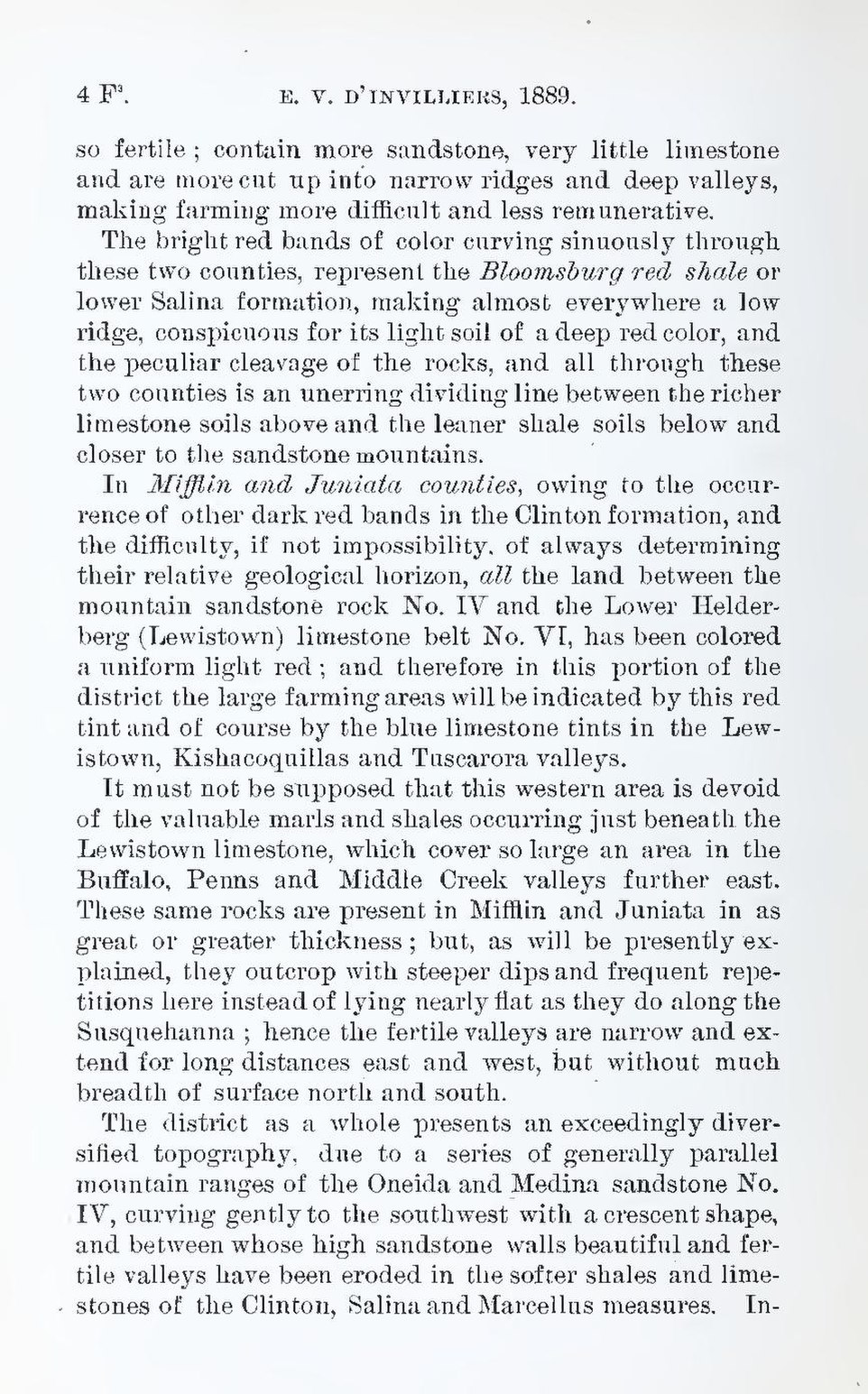so fertile; contain more sandstone, very little limestone and are more cut up into narrow ridges and deep valleys, making farming more difficult and less remunerative.
The bright red bands of color curving sinuously through these two counties, represent the Bloomsburg red shale or lower Salina formation, making almost everywhere a low ridge, conspicuous for its light soil of a deep red color, and the peculiar cleavage of the rocks, and all through these two counties is an unerring dividing line between the richer limestone soils above and the leaner shale soils below and closer to the sandstone mountains.
In Mifflin and Juniata counties, owing to the occurrence of other dark red bands in the Clinton formation, and the difficulty, if not impossibility, of always determining their relative geological horizon, all the land between the mountain sandstone rock No. IV and the Lower Helderberg (Lewistown) limestone belt No. VI, has been colored a uniform light red; and therefore in this portion of the district the large farming areas will be indicated by this red tint and of course by the blue limestone tints in the Lewistown, Kishacoquillas and Tuscarora valleys.
It must not be supposed that this western area is devoid of the valuable marls and shales occurring just beneath the Lewistown limestone, which cover so large an area in the Buffalo, Penns and Middle Creek valleys further east. These same rocks are present in Mifflin and Juniata in as great or greater thickness; but, as will be presently explained, they outcrop with steeper dips and frequent repetitions here instead of lying nearly flat as they do along the Susquehanna; hence the fertile valleys are narrow and extend for long distances east and west, but without much breadth of surface north and south.
The district as a whole presents an exceedingly diversified topography, due to a series of generally parallel mountain ranges of the Oneida and Medina sandstone No. IV, curving gently to the southwest with a crescent shape, and between whose high sandstone walls beautiful and fertile valleys have been eroded in the softer shales and limestones of the Clinton, Salina and Marcellus measures. In-
